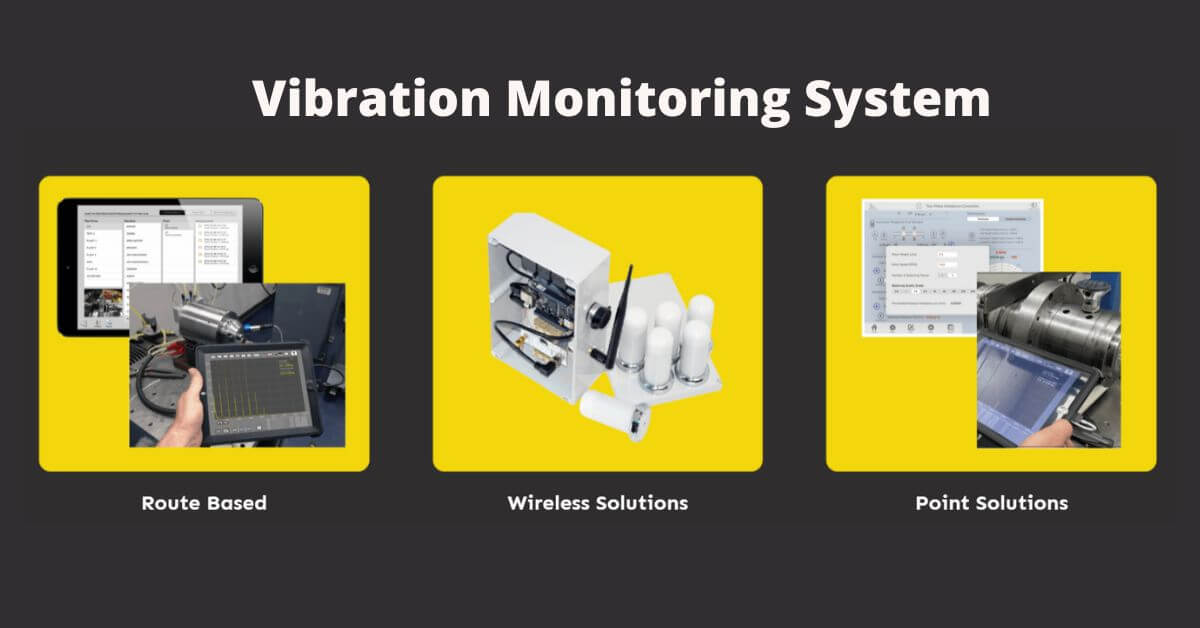A vibration monitoring system is a set of tools used to measure one or more parameters to identify machine health changes.
What is a Vibration Monitoring System?
A vibration monitoring system is a type of equipment used to monitor the vibrations of a machine or other structure. Vibration monitoring can be used to detect and diagnose problems before they become serious, and can also help prevent accidents from happening.
Benefits of using vibration monitoring equipment include the ability to detect early signs of failure and to prevent costly repairs later on. By understanding the frequency and amplitude of vibration, manufacturers can better optimize designs, reducing the amount of noise and wear on machinery.
In many cases, a vibration monitoring system is mandatory for certain types of equipment. An engine manufacturer, for example, may require one in order to determine whether a particular engine design is safe. Vibration monitoring systems are also becoming increasingly common in industrial settings, where they are used to monitor machines that produce hazardous materials.
Why Do You Need One?
A vibration monitoring system (VMS) can help you detect problems with your equipment before they turn into disasters. By monitoring vibrations, you can identify when something is wrong and take the necessary steps to prevent a problem from becoming worse.
There are a few different types of VMSs, but all of them have one common goal: to help you prevent equipment failures and disruptions. A VMS can be used to monitor industrial equipment, transportation systems, medical devices, and more.
A VMS can be a valuable tool for both businesses and owners of personal property. For businesses, a VMS can help you keep tabs on your machines and make sure they’re running optimally. For homeowners, a VMS can help you identify potential issues with your appliances and cars – before they cause any damage.
Features of a Vibration Monitoring System
A vibration monitoring system (VMS) is a valuable tool for detecting and identifying vibration anomalies in both permanent and temporary installations. A VMS can also be used to monitor the health of equipment, identify potential failures before they cause serious damage, and help optimize equipment performance.
There are many features that make a VMS an essential part of any organization’s safety and security infrastructure. Some of the most important features of a VMS include:
Vibration detection
A VMS can detect vibrations at various frequencies and amplitudes, allowing it to identify both steady state and transient vibrations. This capability allows a VMS to detect events such as machine failures, power outages, or sudden changes in equipment loads.
Vibration analysis
Once a vibration has been detected, the VMS can provide detailed information about the event, including the severity, location, and time of occurrence. This information can be used to improve safety and security procedures, identify potential failures before they cause serious damage, and optimize equipment performance.
Vibration alarm notification
A VMS can send alarm notifications to designated users when specific vibration parameters reach specified thresholds. This feature can help ensure that personnel are alerted to
Choosing the Right Type of Vibration Monitoring System
A vibration monitoring system is a very important piece of equipment for any business or industrial plant. It’s used to monitor and track the movement of objects in order to ensure that they are operating within their design specifications.
Vibration monitoring systems can be classified based on how they collect data: offline or online. Offline systems collect data from the sensors directly and store it on a hard drive or other storage device.
How to Choose the Right Vibration Monitoring System for Your Application
A vibration monitoring system is a critical safety tool that can help identify and prevent accidents. A monitoring system can provide early warning of imminent failure, monitor compliance with safety requirements, and detect unsafe working conditions.
To choose the right vibration monitoring system for your application, consider the following factors:
-
Type of Vibration
The type of vibration to be monitored will influence the type of sensor and/or monitoring system required. For example, heavy industrial machinery may require a more sophisticated monitoring system that can detect not just linear vibrations but also rotational and lateral vibrations.
-
Frequency of Vibration
The frequency of the vibration to be monitored will also determine the type of sensor and/or monitoring system required. For example, if the vibration is periodic (e.g., every few seconds), a vibrometer may be sufficient; however, if the vibration is irregular (e.g., jerky), an accelerometer or gyroscope may be required.
Related article, How A Phone System Could Improve Your Business Results
